MYTHOLOGIES OF THE KARUK TRIBE
The Karuk Tribe is a federally recognized Indian tribe of Karuk people. They are an indigenous people of California, located in the northwestern corner of the state, in Humboldt and Siskiyou counties. The Karuk Tribe is one of the largest Indian tribes in California. As a government organization, the Karuk Tribe of California has demonstrated its ability to administer a multitude of social, cultural and economic programs effectively, earning the status of a “Self-Governance Tribe.”

The Karuk do not have a legally designated reservation but do have a number of small tracts held in trust by the federal government as well as tracts owned by the tribe in fee-simple status. These small non-contiguous parcels of land are primarily located along the Klamath River in western Siskiyou County and northeastern Humboldt County in California. The total land area of these parcels is 2.908 square kilometres (1.123 sq mi; 719 acres). A resident population of 333 persons was reported in the 2000 census. There are also a number of tracts located within the city of Yreka. The Karuk people speak the Karuk language, a Shastan language belonging to the Hokan language family.[4] The tribe has an active language revitalization program.[5][6] With fewer than twelve active full-time speakers alive as of 2015, Karuk (also known as Karok, Quoratem, Charoc, and Quoratean) is considered to be a severely endangered language according to the Endangered Languages Project.[7][8] Field recordings, primary texts, lexical resources, language descriptions, and other resources about the language have been archived by the University of California, Berkeley California Language Archive.

National & International Tribal Organizations

The modern Karuk are centered in the town of Happy Camp and employ a distinctive flag that celebrates one of the great artistic expressions of all California (and most others) Tribes – basket weaving. The design is based upon typical patterns found on Karuk baskets, both ancient and modern.
Essentially a flag of three vertical stripes, white/red/white, with the central stripe being approximately three-and-a-half times as wide as one of the white stripes, the flag of the Karuk Tribe features elements of basket designs on each stripe.
The two white stripes mirror one another. Each is divided in half by a narrow black stripe. On the outer portion of each of theses subdivided stripes are three groups of black triangles evenly dispersed from top to bottom. These outer sets of triangles have their bases pointing outward and the tips of each triangle points toward the center. The inner half of each white stripe bears two sets of the three triangle’ pattern, but here the points of each triangle aim toward the edge of the flag. These two groupings are offset from the outer sets, forming a kind of zigzag pattern.

The central red stripe is accented at the extreme left and right by narrow yellow bands, with even narrower red edging separating them from the white stripes. In the very center of the flag is a ring comprising three white eagle feathers, each bearing a white bead at its base from which two black strings dangle. The feathers all have black tips extending about halfway down the length of each feather. Within the feather ring is the Tribe’s name “Karuk” in a unique font.
The recurring emphasis upon the number three may recall the three related Tribes of the Klamuth River, but this has not been stated with any confidence.
The flag was designed by Karuk Tribal member Lonna Dexter.

The Karuk Tribe is a federally recognized Indian Tribe (73 Fed. Reg. 18,535, 18, 544 (April 4, 2008)) occupying aboriginal lands along the middle course of the Klamath and Salmon Rivers in Northern California. The tribe’s Aboriginal Territory has been previously mapped and includes an estimated 1.48 million acres within the Klamath River Basin. This Territory is the land base that was utilized in the process of receiving federal determination of tribal recognition.

The Karuk Tribe’s language is highly endangered, with fewer than a dozen fluent elderly speakers. They live throughout a large area, from Yreka to Happy Camp to Orleans to Eureka (and one 96-year-old man lives in Portland). The number of fluent speakers steadily dwindled following contact with Europeans in the 1850s. But since the 1970s and 1980s, when the Supahans and others began diving back into the culture, more adults have been learning Karuk as a second language. Today, language classes in Karuk, Yurok and Hupa are taught in some public schools, and in the community.

Skur’hiram tanivaram: I’m going to school.
Tá nikyavîichvar: I’m going to work.
Chôora mi-thúxath nu-músaan: Let’s go see your auntie.
Tá ni’ íppak: I’m home.
Tá nupiktar: I missed you.

INTRODUCING THE PÍKYAV PHILOSOPHY
In the Karuk language, the verb píkyav means “to repair,” or “to fix.” Another Karuk word is pikyávish, which refers to the world-renewal ceremony, a set of ceremonies that the Karuk and neighboring tribes continue to hold annually. When describing the Karuk culture, tribal members often explain, “We are fix-the-world people.” For the Karuk Tribe, the center of the world is Katimin, the place where the Klamath River and the Salmon River meet. As part of this philosophy, the Karuk Tribe is working to repair and restore the complex socio-cultural and ecological systems that make up the Klamath River Basin. This work includes fixing some of the environmental and social damages that continue to have profound impacts on Karuk people, traditions, and Karuk ancestral lands and territory.

“Climate change is real and it’s happening now,” said Bill Tripp, Deputy Director of Karuk Natural Resources Department. “Our plan relies on the best available science and traditional ecological knowledge to protect local communities, and our culture.” The Karuk Tribe’s territory includes 1.38 million acres in Northern California, which they say is being affected by “the effects of climate change, including changes in precipitation patterns, decreased snowpack, increasing droughts, increasing frequency and severity of wildfires, and disease and pest outbreaks. Tribal officials say their plan relies on traditional knowledge of their local ecosystems, which they say could serve as useful to the rest of California with the increasing severity and frequency of wildfires. They argue that money set aside for them in the state budget could allow them to better prevent wildfires on their land.
Dictionary and Text Corpus of the Karuk Language
Karuk tribe of California
Karuk language
Karok religion and expressive traditions
Karuk Rituals and Beliefs
Karok religion and expressive traditions
Karuk Rituals and Beliefs

Karok Indian Legends, Myths, and Stories
Myths and Legends of California and the Old Southwest
Online book about Karuk and other California Indian mythology.
Karuk History and Creation Story
Karuk legend about the origin of the world.
How Coyote Brought Fire
Karok legends about the origin of fire.
The Devil Who Died Laughing
Karuk Indian myth in their original language with English translation.
The Greedy Father
Karuk legend about a man transformed into a waterbird for being a bad provider.
Fable of the Animals
Karuk story about the origin of Coyote.
“Its Illegal to be a Karuk Indian in the 21st Century”
‘INHABITANTS’ DIGS DEEP INTO INDIGENOUS SOLUTIONS TO CLIMATE CHANGE
The filmmakers behind a new documentary discuss Native land stewardship, building collaborative relationships with tribes, and the challenges of implementing Indigenous practices on a wider scale.
Surviving Through the Days
Translations of Native California Stories and Songs
Anthology of myths and traditional literature from the Karuk and other Native California tribes.
American Indian Trickster Tales
Compilation of more than a hundred stories about Coyote and other Native American tricksters.
(Use discretion sharing these with kids as some of the stories contain adult humor.)

Karuk Tribe brings traditional science to federal land management
The Forest Service Embraces a Tribal Tradition
The Karuk were once denied the right to practice an ancient tradition. Now scientific and resource management circles are seeing the merits of controlled burning.
Theft brought Fire to the Karuk people.
Coyote, the cleverest of the Animal People, traveled to a high mountaintop where Fire was hoarded by three yellow jacket wasps, sisters, who were old and vain. Using his considerable wiles, Coyote flattered the Yellow Jacket Sisters, extolling their beauty.Distracted by Coyote’s sweet talk, the Sisters left Fire unattended. Coyote saw his chance. He stole Fire, fleeing with it down the mountainside and back to the other Animal People. The Yellow Jacket Sisters followed close on Coyote’s heels.The Animal People exchanged Fire between one another as the Yellow Jacket Sisters buzzed angrily around them. Fire continued to pass between the Animal People, burning slowly down to a single ember. Frog, the last to hold Fire, held that dying ember in his mouth and dove into the Klamath River, not surfacing until he reached the opposite bank.
Káruk people have lived in the Klamath Mountains and along the upper parts of the Klamath River for thousands of years. Káruk artifacts dating over 10,000 years have been discovered. Today, the Káruk Tribe is one of the largest tribes in California. Káruk tribal lands span almost 2 million acres in the steep canyons, mountains and shores of Northern California’s Klamath River Basin. Ka’tim’îin is the Káruk Tribe’s “Center of the World”. Located along the Klamath River (Ishkeesh), it is a powerful place of healing and ceremony, where Káruk people have lived and prayed, according to their creation stories, “since time began”.

Known as the “Heart of the Klamath” or “Gateway to the Marble Mountains”, Happy Camp (áthith’thúf-voon’nuupma ni’áraamsiip) became famous in the mid-1800s for its abundant, easy-to-find supply of gold. At one time called Murderer’s Bar because of all its violence, the town was officially named HAPPY CAMP in 1852. After the Gold Rush, salmon and steelhead fishing, and logging became major industries. Happy Camp is the present-day headquarters of the Káruk Tribe, and is governed by a tribal council of nine members.
Karuk Tribe
64236 Second Avenue
PO Box 1016
Happy Camp, CA 96039
530-493-1600
The following list of Káruk villages were located in Northern California’s Klamath River bioregion, as reported in the Handbook of American Indians in 1906:
Amaikiara, Aperger, Apyu, Aranimokw, Ashipak, Asisufuunuk, Chainiki, Chawakoni, Chinits, Couth, Homnipa, Homuarup, Ift, Inam, Inotuks, shipishi, Ishwidip, lyis, Ka’tim’îin, Katipiara,Kokaman, Kworatem, Ohetur, Olegel, Oler, Opegoi, Panamenik, Pasara, Sawuara, Shanamkarak, Shegoashkwu, Sumaun, Sunum, Supasip, Tishrawa, Tsano, Tsofkara, Tui, Uchapa, Unharik, Wetsitsiko, Wopum, and Yutoyara
KARUK LITERATURE

Karok (karuk, ‘upstream’; they have no name for themselves other than that for ‘men’ or ‘people’, arar, whence Arra-arra, Ara-ara, etc.). The name by which the Indians of the Quoratean family have, as a tribe, been generally called. They lived on Klamath river from Redcap creek to Indian creek, north west California. Below them on the river were the Yurok, above them the Shasta, to their east were other Shasta tribes, while on the west they were separated by a spur of the Siskiyou mountains from the Yurok and the Athapascan Tolowa. Salmon river, a tributary of the Klamath, was not Karok territory except for about 5 miles from its mouth,-but was held mainly by Shastan tribes. While the Karok language is fundamentally different front the languages of the adjacent Hupa and Yurok, the Karok people closely resemble these two tribes in mode of life and culture, and any description given of the latter will apply to the Karok. They differ from the Yurok principally in two points: One, that owing to the absence of redwood they do not make canoes but buy them from the Yurok; the other, that they celebrate a series of annual ceremonies called “making the world,” which are held at Panamenik, Katimin, and Inam, with a similar observance at Amaikiara, while the Yurok possess no strictly analogous performances.
The Karok (or Karuk) live on the Orleans Karok Reservation and the Quartz Valley Rancheria. (Eargle: 1986)
The Karok gave the Shasta tobacco seeds, baskets, dentalia, salt, seaweed, tan oak acorns, canoes, pepperwood, abalone shells and ornaments and olivella shells. They got juniper beads, basketry caps, salt, dentalia, white deer skins, woodpecker scalps, whole Olivella shells, large obsidian blades, obsidian, deer skins, sugar pine nuts, wolf skins and horn for spoons. From the Wailaki they got dentalia. They gave the Tolowa soaproot and pine nut beads, and they got smelt and dentalia. They gave the Konomihu dentalia and baskets, and they got furs and deer-skin clothing. They gave the Yurok dentalia and got from them whole Olivella Shells, tobacco seeds, dugout canoes, clam shells, pipes and bows. They got whole clam shells from the Coast Yuki, and salt from the Nongatl.(Davis: 1966)

Coyote Steals Fire
Devil Who Died LaughingEfforts Under Way to Preserve Karuk Language
Fable of the Animals
Fire Race
Greed, Pollution and Genocide
Karuk Baskets
Karok houses at Soames Bar
Karuk Acorn Soup Cooking Basket
Karuk Constitution
Karuk, The People of the Klamath
Karuk Dance Cap
Karuk Elder Keeps Culture Live Through Coyote’s Tales
Karuk Language Resources
Karuk Tribe of California
Redistributing the Wealth
Traditional Karuk Dress (Photo Gallery)
Traditional Karuk Songs

Many, many years ago there was a GOD named Eel-with -a-Swollen-Belly, who grew up at the downstream end of the world in the earliest days when the world was new. His mother lived at the upriver edge of the world. One day Eel decided that he wanted to return home to visit his mother. The path to his mother’s home took him along the river bed. As he traveled upstream he overturned rocks and piled them into shrines. At each one of these places where he put a shrine he knew that humans would eventually appear. “When the people appear these shrines will help them remember that I was here. And they will place a rock on the shrine to honor me.”
Eel traveled further up the Klamath River until he reached “The Center of the World”. When he reached this special place he decided to create a different shrine. He made two shrines, one on each side of the river. He said to himself,” The Center of the World will be filled with many people. They will need extra shrines to help them remember me.” Eel traveled on the way for many days; placing shrines along the Klamath River. The river flowed downriver from the beginning of the Klamanth River. One day Eel arrived at the “Inaam World Renewal Site”. After placing a shrine at Inaam he traveled further upstream . After many days he reach the upriver end of the world and his mother’s birthplace. After reaching his final destination he turned into the lamprey eel that we know today. Eel was once a man long ago. And that is how Eel-with-a-swollen -belly turned into lamprey eel a long, long time ago.

LINKS
KARUK RESOURCES ON THE WEB
KARUK SECTION OF WILLIAM BRIGHT’S SITE
The Karuk tribe, also spelled Karok, is a group of Native American people with tribal headquarters off of State Route 96 in Happy Camp, California. The tribe has about 3,300 members and has tribal board meetings in the towns of Yreka, Happy Camp, and Orleans in California. The tribal government has more than 100 employees, and the tribal council is made up of nine members.
The tribe does not have a reservation, but does have several tracts of land held in federal government trusts and others that are owned by the tribe. These parcels total just more than a square mile (2.9 km). The federal government has recognized the Karuk tribe of California since 1979. In 1985, the tribe adopted a constitution.
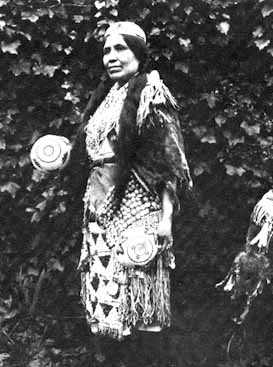
Traditionally occupying lands along the Klamath River, the name of the Karuk tribe translates to “upriver people.” The Karuk were hunters and gathers, and depended on salmon fishing. Fishing was done using large dip nets from platforms. Harpoons and gaffs were also sometimes used.
The Karuk tribe traditionally had no formal political structure or leadership. There were no crimes against society, but only against an individual. Those who committed crimes had to make restitution to the harmed party. The tribe’s traditional beliefs depended upon rituals that included sweating, bleeding, and fasting. The Karuk were the only tribe in California to grow tobacco.
Continuing with their traditional way of life and having little contact with Europeans until 1850, the California Gold Rush changed that forever. The Karuk tribe had their villages burned, lands seized, and diseases devastated their population. Some Karuk people were removed to the Hoopa Valley Reservation, others moved away from traditional lands, and some remained.
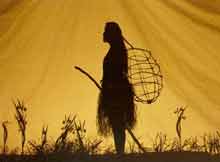
Many in the tribe continue to engage in traditional activities such as hunting, storytelling, and fishing. Ceremonial dancing is also a part of the Karuk tradition and includes the brush dance, jump dance, and Pikyavish. The Pikyavish, known as the world renewal ceremony, has been revived and is held in late summer. The ceremony includes priestly rituals, dancing, and singing.
With only eight fluent speakers of its language known to be alive in 2002, the Karuk tribe began an effort to preserve its traditional tongue. The tribe has a language committee that works to teach members the language, and has updated and distributed a dictionary of the language from the 1940s. The Karuk language is part of the Hokan language family.
FIRE RACE
A long time ago, only the three Yellow Jacket sisters had fire. Even though other animals froze, the fire was kept from them. Wise Old Coyote, however, devises a plan to steal the fire, and enlists the other animals to help. Coyote diverts the yellow jackets, seizes a burning stick, and runs away. As the yellow jackets chase him, he hands it off to Eagle, who hands it to Mountain Lion. Several hand-offs later, Frog hides a hot coal in his mouth on a river bottom, and the yellow jackets give up. When Frog spits the coal out, Willow Tree swallows it, and Coyote shows the animals how to extract it: by rubbing two sticks together over dry moss. Now that the animals have fire, each night they gather in a circle while the elders tell stories. An meaningful tale which stresses the importance of the natural world and our need to live cooperatively with it.
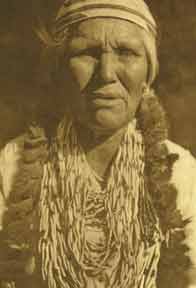
The Karuk Used Fire to Manage the Forest for Centuries.
Now They Want To Do That Again

A family struggles to bring its ancestral tongue back to life
The Karuk Tribe’s language is highly endangered, with fewer than a dozen fluent elderly speakers. They live throughout a large area, from Yreka to Happy Camp to Orleans to Eureka (and one 96-year-old man lives in Portland). The number of fluent speakers steadily dwindled following contact with Europeans in the 1850s. But since the 1970s and 1980s, when the Supahans and others began diving back into the culture, more adults have been learning Karuk as a second language. Today, language classes in Karuk, Yurok and Hupa are taught in some public schools, and in the community. In 1992, Advocates for Indigenous California Language introduced the master-apprentice program to the tribe (linguist Hinton is one of the main trainers). It’s an immersion method in which a fluent indigenous language speaker is paired with a beginning speaker, and they spend up to 40 hours a week together for three years, doing everyday things while communicating only in the indigenous language. About 20 Karuk teams have completed the program and more are signing up, says linguist Susan Gehr, a Karuk Tribe member, who taught at Hoopa Valley High and has been the tribe’s language program director.

Skur’hiram tanivaram: I’m going to school.
Tá nikyavîichvar: I’m going to work.
Chôora mi-thúxath nu-músaan: Let’s go see your auntie.
Tá ni’ íppak: I’m home.
Tá nupiktar: I missed you.

Karuk Tribe releases plan for adapting to climate change, seeks governor’s support
A visitor asks the boys to teach her some Karuk. At first, they look at her, silent. Then the words tumble out of each of them. “Xanchíifich — that’s ‘frog.'” “Ôok naa — that’s ‘come here.'” “And then you say, “tá ni áhoo — I’m coming.” “Pûuhara — that means ‘no.'”




















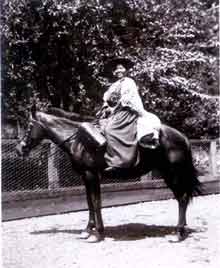

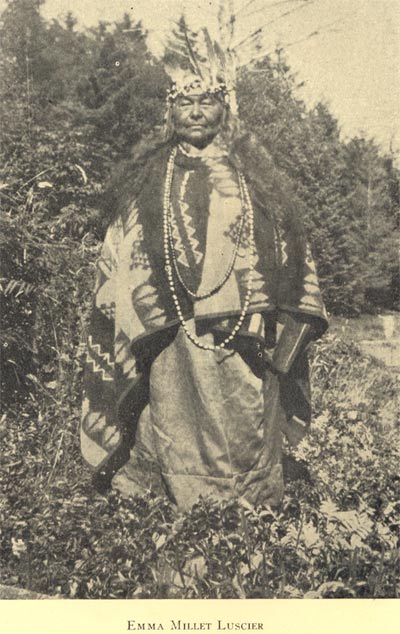

Comments
Post a Comment